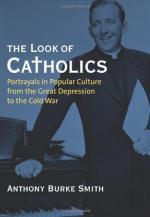|
This section contains 324 words (approx. 2 pages at 300 words per page) |

|
Communication in America was forever changed in the 1920s. With the beginning of radio broadcasting, printed newspapers and magazines were no longer the only sources of common information about happenings in the country or the world. Even though about fifty million Americans listened to the radio by the middle of the decade, newspapers and magazines remained the dominant sources of information during the decade.
Radio news bulletins captured people's interest, but printed sources told the "whole story." Newspapers not only provided serious reporting on news events, they also entertained people with gossip columns, comic strips, or the syndicated Ripley's Believe It or Not! cartoons. Pulp magazines, such as Amazing Stories and the Black Mask, published imaginative tales to entertain readers everywhere. People could buy newspapers and magazines almost anywhere, from boys on the street, at newsstands, and at railroad stations.
Although the advent of...
|
This section contains 324 words (approx. 2 pages at 300 words per page) |

|



